Just announced: New TTArtisan 35mm T/2.1 Dual Bokeh Cine Lens
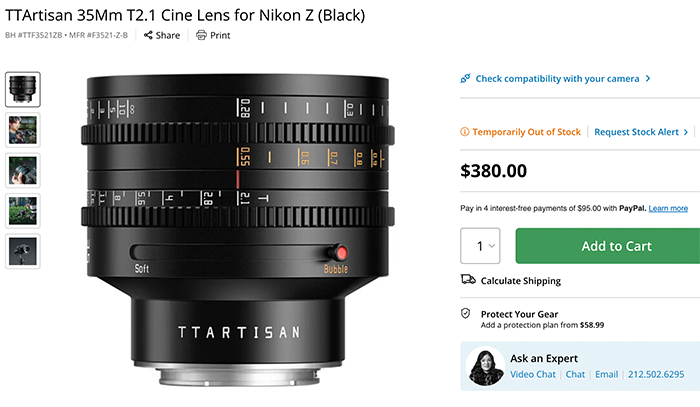
TTartisan announced this dual bokeh Cine Z-X-E-L-RF mount lens you can preorder at BHphoto, Amazon, TTartisan, FotoErhardt.
Here is a review that explains what’s so unique with this lens:

TTartisan announced this dual bokeh Cine Z-X-E-L-RF mount lens you can preorder at BHphoto, Amazon, TTartisan, FotoErhardt.
Here is a review that explains what’s so unique with this lens:
Skylum released the new Spring update on their Luminar software (10% off with our coupon code “SAR”).
Press text:
The latest update focuses on making everyday editing faster, easier, and more intuitive, with new tools and thoughtful improvements shaped directly by user feedback. Whether you’re a hobbyist looking to streamline your process or a pro aiming for polished results with less hassle, this update brings meaningful enhancements without overcomplicating your workflow.
Luminar Neo continues to evolve, and this latest update is a perfect example of how thoughtful changes can make a big difference in your photo editing workflow. Built on direct feedback from users, this update focuses on refining the user experience, improving performance, and adding just the right touch of creative flexibility.
Instead of sweeping changes or flashy overhauls, this update brings a collection of smart, user-driven enhancements that photographers will actually use. Let’s take a closer look at what’s new and how it can help improve your editing process.
Your AI-Powered Photo Editor for MacOS and Windows
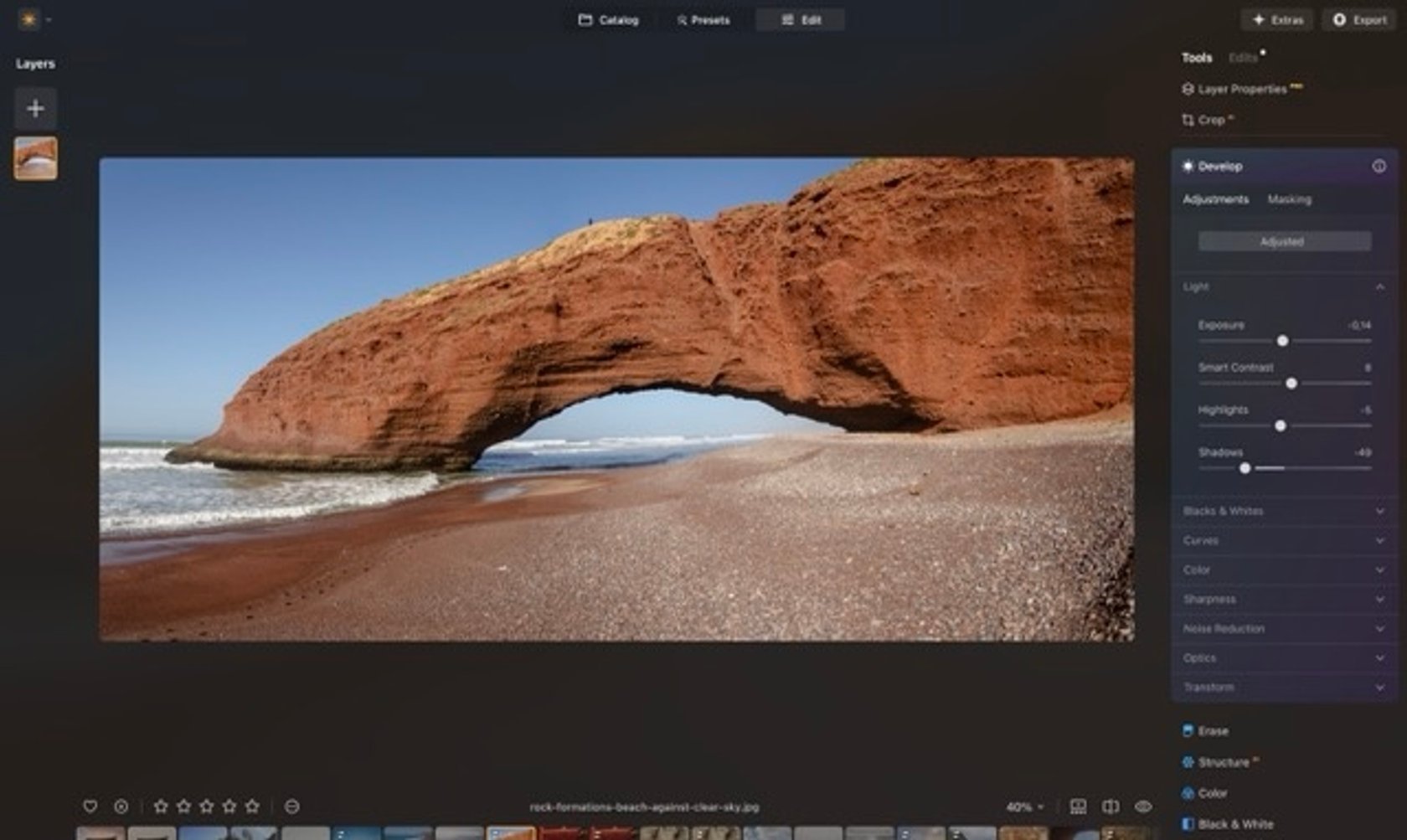 One of the most helpful additions in this update is Auto Adjust, a new feature integrated into the Develop and Develop RAW tools. Auto Adjust analyzes your image with one click and automatically adjusts key settings like exposure, highlights, shadows, and black and white levels.
One of the most helpful additions in this update is Auto Adjust, a new feature integrated into the Develop and Develop RAW tools. Auto Adjust analyzes your image with one click and automatically adjusts key settings like exposure, highlights, shadows, and black and white levels.
Whether you’re processing travel shots, portraits, or everyday moments, Auto Adjust gives you a great starting point. It’s especially useful for photographers looking to speed up their workflow while still keeping creative control over the final look.
You can use Auto Adjust as a quick fix or as the first step in a more detailed edit—either way, it adds real value to your toolkit.
 Photographers always prioritize performance, especially when working with large image libraries. That’s why Luminar Neo has introduced a new Catalog Cache Cleaning feature, now available in the Preferences panel.
Photographers always prioritize performance, especially when working with large image libraries. That’s why Luminar Neo has introduced a new Catalog Cache Cleaning feature, now available in the Preferences panel.
This tool lets you quickly clear cached files from your catalog, helping free up disk space and improving speed. The team recognizes that speed can be tricky—it might feel faster when there’s more room to work with, especially if you’re running low on storage. However, clearing the cache can sometimes mean that images take a bit longer to reprocess the next time you open them. It’s a trade-off that opens the door for future optimization and smarter memory handling.
If you’ve ever noticed slowdowns with a large project, this tool is definitely worth checking out.
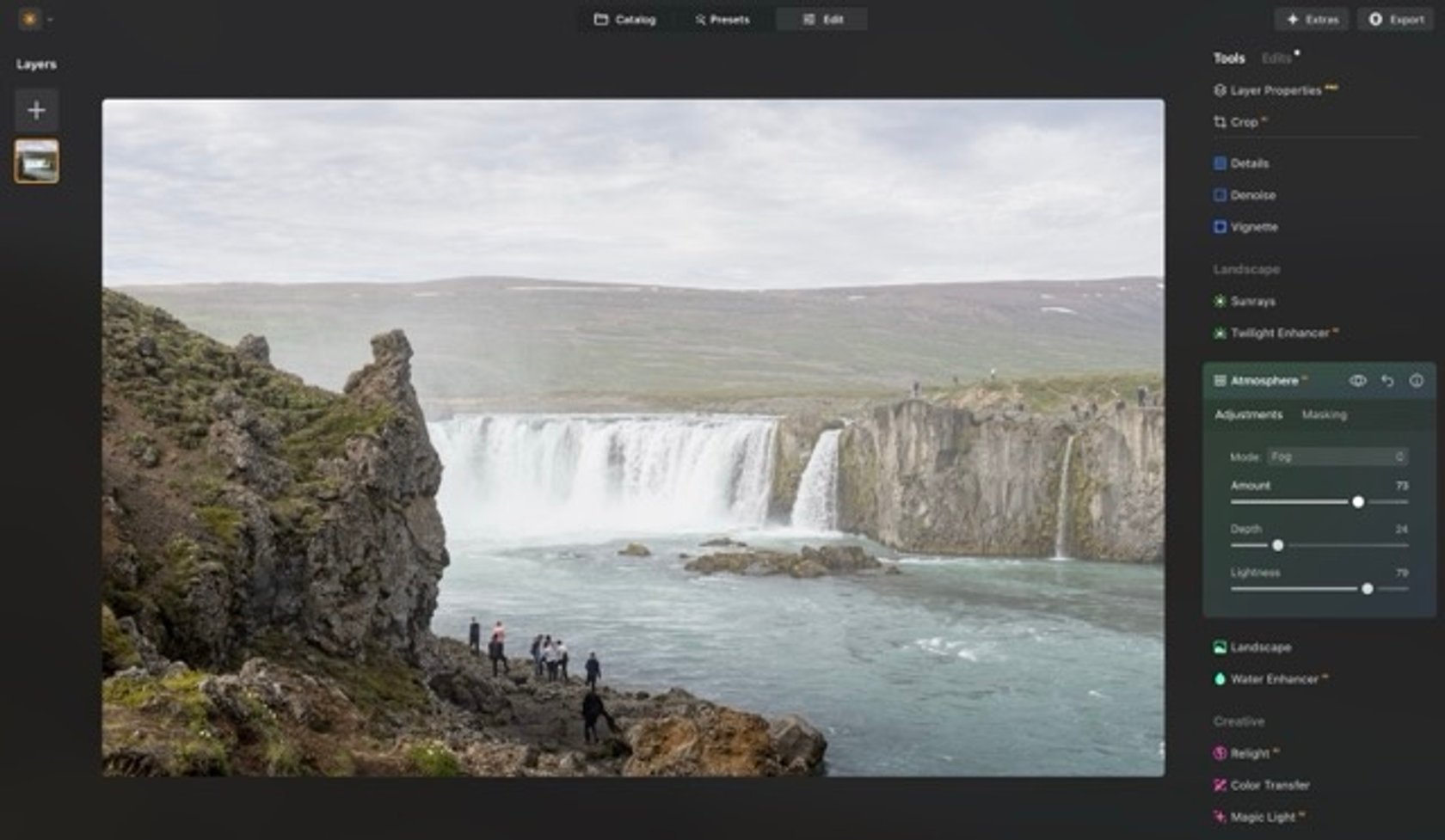 If you love adding mood to your photos, you’ll appreciate Atmosphere AI’s subtle yet noticeable upgrade. This update includes improvements to the tool’s underlying Depth Models, which result in more realistic and immersive fog effects.
If you love adding mood to your photos, you’ll appreciate Atmosphere AI’s subtle yet noticeable upgrade. This update includes improvements to the tool’s underlying Depth Models, which result in more realistic and immersive fog effects.
Now, when you apply fog or haze, the tool better understands the depth and structure of your image. This allows fog to wrap more naturally around objects in the scene, adding cinematic depth without overpowering the photo.
Whether you’re enhancing a dramatic landscape or adding a bit of mystery to a portrait, this upgrade helps make your edits feel more believable and polished.
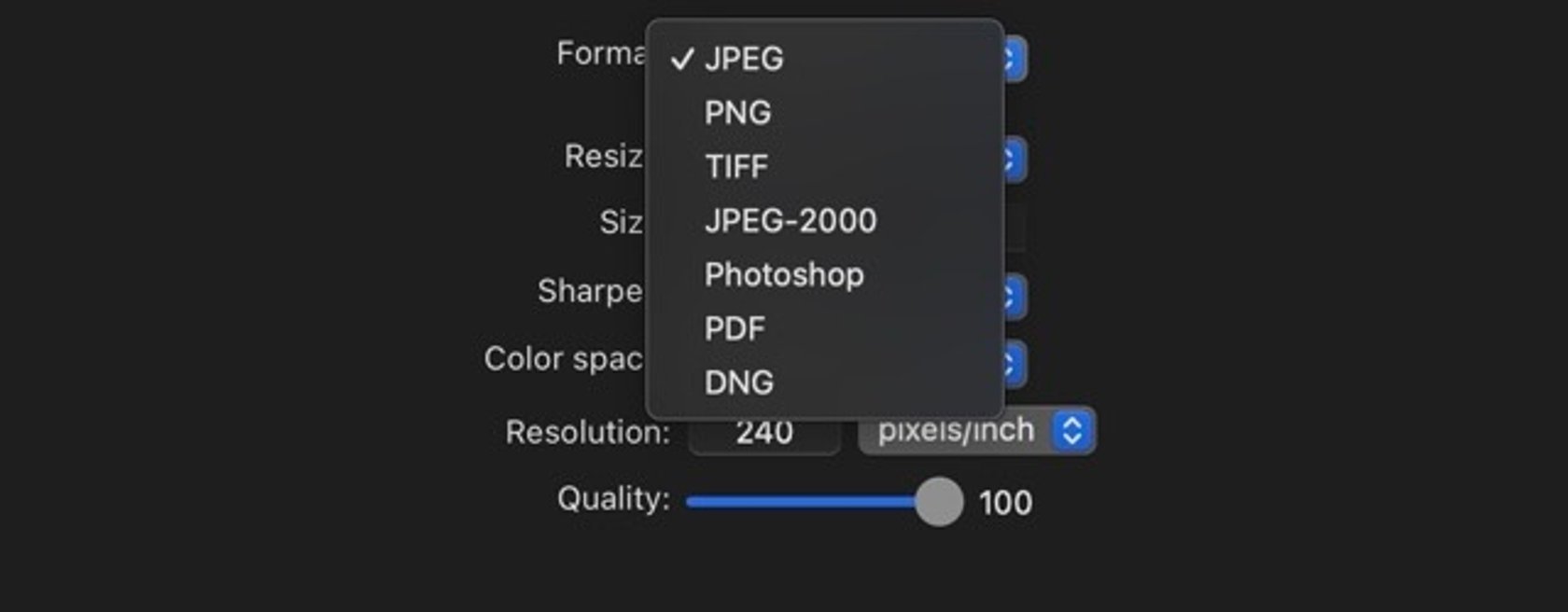 Finishing your edit is just as important as starting it, and the updated Export Menu in Luminar Neo makes that final step easier and more flexible than ever. The redesigned interface now gives you advanced control over how your images are saved and shared, offering customization for:
Finishing your edit is just as important as starting it, and the updated Export Menu in Luminar Neo makes that final step easier and more flexible than ever. The redesigned interface now gives you advanced control over how your images are saved and shared, offering customization for:
File format (including the new DNG export option)
Image quality settings
Resolution and size adjustments
Custom file naming
Optimized export for email attachments
Seamless transfers to Luminar Share for mobile and social sharing
These options streamline the export process, whether you’re preparing files for print, web, or archiving. With more efficient file management and export presets, it’s now faster to share your finished edits across devices or with clients—no extra steps needed. Whether you’re sending a quick preview to a client or transferring a final image to your phone, this update makes it effortless.
Perhaps the most meaningful addition in this update isn’t a new tool—it’s the commitment to listening. Luminar Neo now includes built-in options for users to submit feedback and even upload images to help demonstrate real-world issues or ideas.
This opens up a direct line of communication between the community and the development team, making future updates even more relevant and responsive. It’s clear that the team behind Luminar Neo is not just building software—they’re building it with their users.
This Luminar Neo update isn’t about radical transformations—it’s about refining what works, fixing what doesn’t, and adding thoughtful touches that improve the everyday editing experience.
From Auto Adjust to smarter fog effects and faster performance, every improvement feels purposeful and practical. It’s the kind of update that might not grab headlines, but it will absolutely make your workflow smoother and more enjoyable.
Perfect! Here’s your final, fully polished closing section with the link and 85% offer seamlessly integrated:
If you haven’t checked out these new tools yet, now’s a great time to open Luminar Neo and explore what’s changed. Sometimes, the best updates are the ones that quietly make everything work better—and this one does just that.
Exclusive Tools of Endless Possibilities in One AI Editor
And if you’re not using Luminar Neo yet, now’s the perfect time to jump in. It’s 85% off for a limited time, giving you full access to powerful, intuitive tools designed to help you create with more focus and freedom.
A new overivew about the messy Tariff sitation
Preorders:
BHphoto, Amazon, Adorama, Fotoerhardt, Fotokoch, WexUK.
Sony Electronics Launches FE 50-150MM F2 GM
The World’s Firsti Telephoto Zoom Lens with a Maximum Focal Length of 150 mm and Constant F2 Aperture Designed for Wedding, Portrait, Indoor Sports, Photo, and Video Professionals
Sony Electronics Inc. introduces the FE 50-150mm F2 GM (SEL50150GM), the world’s firsti telephoto zoom lens with a maximum focal length of 150 mm and F2 aperture. This lens features a standard focal length of 50mm at the wide-angle end and combines a constant aperture of F2 with high resolution comparable to that of a prime lens. This allows for a wide range of scenarios with just one lens for various situations and subjects. As part of Sony’s renowned G Master™ series, the FE 50-150MM F2 GM offers an exceptional combination of high resolution and stunning bokeh, enhancing the imaging results for professionals using the Sony Alpha camera system.
“The FE 50-150MM F2 GM G Master marks a pivotal milestone in Sony’s commitment to pushing creative possibilities,” said Yang Cheng, Vice President of Imaging Solutions, Sony Electronics Inc. “By delivering a constant F2 aperture across its zoom range, this lens offers Sony Alpha users with an all-in-one solution that is comparable to multiple prime lenses, like a 50mm, 85mm, and 135mm. This innovation expands the versatility professionals need to capture remarkable imagery in both photography and video.”
Exceptional Image Quality and Smooth F2 Bokeh
The G Master’s internal optical design plays a crucial role in producing its exceptional image quality. By integrating two XA (extreme aspherical) elements, two Super ED (extra-low dispersion) glass elements, and three ED elements, the lens effectively suppresses aberrations, ensuring sharp, high-contrast imagery across the entire zoom range. Additionally, the floating focusing system enables a minimum focusing distance of 0.4m at the wide end and a maximum magnification of 0.20 for detailed shooting.
The FE 50-150MM F2 GM’s constant F2 aperture creates beautifully smooth bokeh, making it an ideal choice for portrait, wedding, and event photographers aiming to isolate subjects with a shallow depth of field. A newly developed 11-blade circular aperture further enhances the signature G Master bokeh. When shooting videos, the lens delivers stunning cinematic results and exceptional clarity.
In addition, Sony’s proprietary “Nano AR Coating II,” applied uniformly across the entire lens surface, significantly reduces ghosting and flare even in backlit conditions, delivering clear and crisp imagery.
Internal Zoom and Compact Design
Measuring at approximately 7-7/8 inches (200 mm) in length and weighing approximately 47.3 ounces (1,340g)ii, the FE 50-150MM F2 GM offers remarkable portability considering its impressive combination of wide zoom range and bright aperture. This lens is ideal for both handheld and gimbal use with its featured internal zoom design that maintains the lens’s length and weight balance despite focal length changes. With its practical design, this lens serves as a versatile, all-in-one solution for those seeking a standard 50mm through 150mm telephoto range.
Fast and Precise Autofocus Performance
Equipped with four XD (extreme dynamic) linear motors and Sony’s advanced control algorithms, the FE 50-150MM F2 GM delivers fast, accurate, and quiet autofocus (AF). This high-performance AF system is compatible with Sony’s Alpha 9 III, supporting continuous shooting at up to 120 frames per second with full AF/AE trackingiii. With a fast AF system and a versatile 50-150 mm zoom range, the lens excels at capturing fast-paced indoor sports, portraits, and events.
Cinematic Video Production
Designed with filmmakers in mind, the FE 50-150MM F2 GM minimizes focus breathing and is compatible with Sony’s Breathing Compensationiv feature on select Alpha cameras. Linear Response MF ensures intuitive manual focus control, while the lens’s internal zoom design maintains stability even while zooming mounted on gimbals. Additionally, the XD linear motors operate quietly to prevent unwanted noise from being captured during recording.
Built for durability, the FE 50-150MM F2 GM features a robust dust- and moisture-resistant designv. A fluorine coating on the front element repels contaminants, making it easy to clean and ensuring the lens remains in top condition even in challenging environments.
Pricing and Availability
The FE 50-150MM F2 GM will be available in May 2025 for approximately $3,899 USD and $5,499 CAD. It will be sold directly through Sony and at a variety of Sony’s authorized dealers throughout North America.
A product video on the new FE 50-150MM F2 GM can be viewed here: https://youtu.be/o-SZCS4SgRw
For detailed product information about the FE 50-150MM F2 GM, please visit: https://electronics.sony.com/imaging/lenses/all-e-mount/p/sel50150gm
Exclusive stories and exciting new content shot with the new FE 50-150MM F2 GM and Sony’s other imaging products can be found at www.alphauniverse.com, a site created to inform, educate, and inspire content creators.
Due the tariff war BHphoto removed the preorder option for the GFX100RF, X-M5 (Black) and X100VI. And Blackmagic Design halted US factory plans due to concerns over tariffs. Since tariffs are levied on the import of parts, production in the USA has become too expensive. It is somewhat ironic that the ‘America first’ tariff policy makes it difficult for US manufacturers to compete on the world stage.
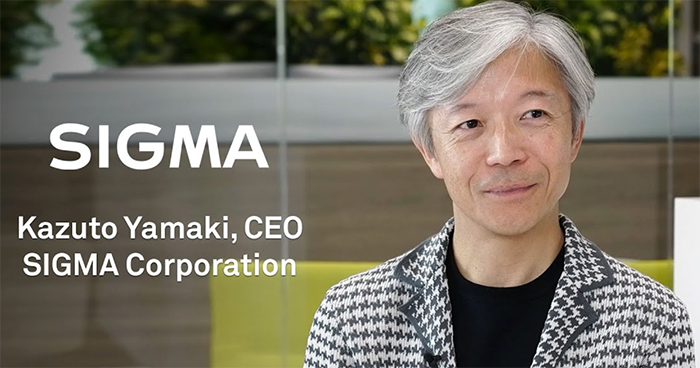
Imaging Resource and Dpreview published an interview with Sigma CEO Yamaki. Here are a couple of interesting points:
Will Smartphones kill the camera market:
I was thinking about this for many years, and eventually I became convinced that there will always be photo enthusiasts, photographers, and camera enthusiasts. They’re still looking for even slightly better quality products, and they’ll never disappear. So I became convinced again that we should focus on product and technology. It’s not that our direction is so different than what we were thinking 12 years ago, but I went through a period of questioning and looking at other markets before deciding this is really what we should do.
The idea behind the Sigma BF:
If you have a camera in your hands, you think, “Maybe I should try to find a nice place, maybe take pictures in London, and share with friends.” The fact that the BF is so stylish makes it easier to bring along anywhere – it’s almost a fashion accessory that makes you want to pick it up.
Sigma BF all metal production with special machines:
Currently, we can make around 200-400 bodies per month. Based on the exciting response from customers, we may need to build another production line system.
Curiosity about the Sigma 300-600mm lens:
The initial starting point was the size, because they wanted it and its case to fit within airline carry-on limits.
About the Foveon development status:
Every time we make a prototype, we find some kind of issues, and every time we find some issues, we fix the problem. And we are now almost at the last stage of the technology development. If everything is done, then we start the product development.
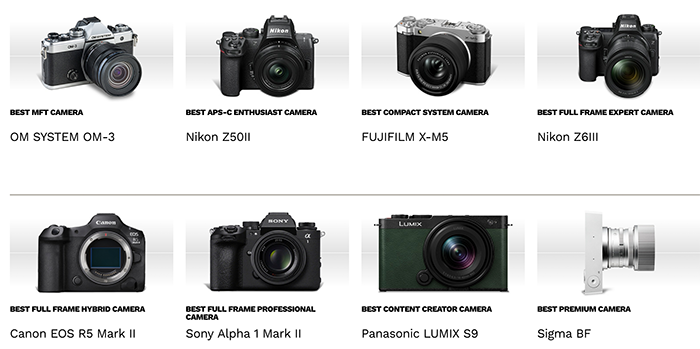
The Tipa association announced the 2025 winners and as usual every company managed to get a win :)
Why is this the case? I asked ChatGPT and it answered that one of the way TIPA earns money is by Licensing Fees from Award Logos:
When a company (e.g., Sony, Canon, Nikon) wins a TIPA Award, they must pay a licensing fee if they want to use the TIPA logo on their packaging or in marketing materials. This is a significant source of revenue for TIPA.
This makes the award rather meaningless, as there is a clear conflict of interest. It’s TIPA’s interest ot reward those companies that pay the fee, and it’s their interest to create as many categories as possible to sell their fees to manufacturers.